Table of Contents
Let's face it, your cat probably has a basket overflowing with store-bought toys, half of which they ignore after five minutes. You know the look – the one that says, "Is that *it*? Another squeaky mouse?" Keeping a feline brain engaged doesn't require a second mortgage for fancy gadgets. Sometimes, the best tools for mental and physical stimulation are sitting in your recycling bin. We're talking about crafting a homemade cat treat toy. This isn't just about saving a few bucks; it's about tapping into your cat's natural instincts to hunt, forage, and solve problems. A good homemade cat treat toy can turn mealtime or snack time into an exciting challenge, preventing boredom and those resulting destructive behaviors. Forget the generic fluff; we're diving into practical, easy ways to build toys that actually work, using things you likely already have. We'll explore simple designs to get you started and even look at how to make things a bit more complex as your feline friend gets smarter. Plus, we'll cover how to use these creations safely and effectively to keep your cat happy, healthy, and perhaps a little less demanding of your constant attention.
Why Your Cat Needs a Homemade Cat Treat Toy
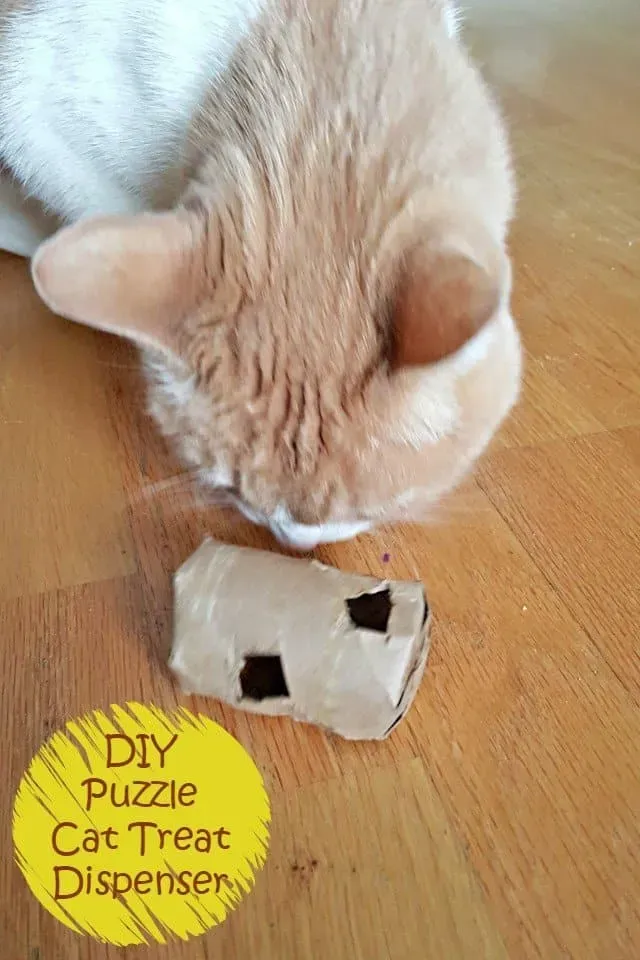
Why Your Cat Needs a Homemade Cat Treat Toy
Fighting Feline Boredom and the Zoomies Aftermath
Look, your cat isn't just a furry couch ornament. Beneath that sleek exterior lies a creature hardwired for action. When they don't get enough mental and physical stimulation, things go south. Fast. Boredom in cats doesn't look like moping; it looks like shredded furniture, midnight opera performances, or suddenly deciding your ankles are prey. A homemade cat treat toy is a simple, effective weapon against this domestic chaos. It forces them to think, to work for their reward, engaging their brain in a way a static toy just can't. Think of it as their daily crossword puzzle, but with kibble. This kind of focused activity can significantly reduce those bursts of destructive energy that hit when they finally decide they've had enough of staring out the window.
Tapping into the Inner Hunter and Forager
Despite the fact you serve them gourmet meals in a bowl twice a day, your cat still has the instincts of a predator and a scavenger. In the wild (or even just your backyard), they'd spend a good chunk of time hunting small prey or searching for edible bits. Dumping food into a bowl is convenient for you, but it offers zero challenge or satisfaction for these deep-seated drives. A homemade cat treat toy mimics this natural process. It requires them to stalk, swat, push, or manipulate the toy to get the food out. This isn't just play; it's fulfilling their biological need to work for their sustenance. Providing this outlet can lead to a calmer, more content cat who feels like they've accomplished something, instead of just waiting for the next handout.
- Provides mental stimulation
- Satisfies hunting instincts
- Reduces boredom-related behaviors
- Encourages physical activity
- Can help slow down fast eaters
Simple Homemade Cat Treat Toy Ideas from Around the House
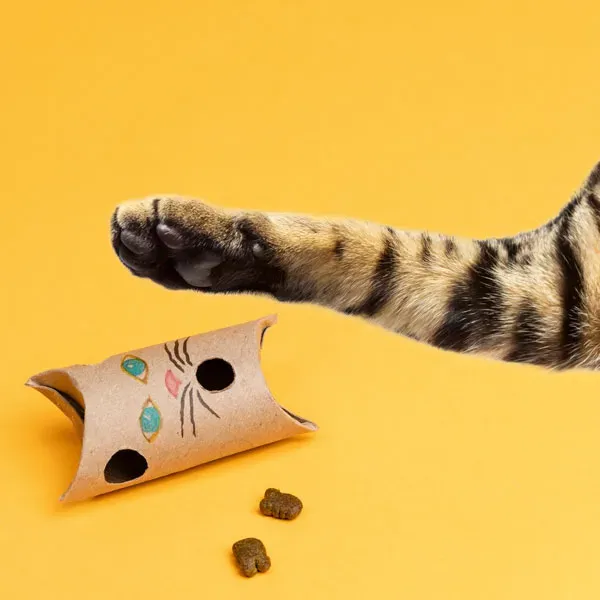
Simple Homemade Cat Treat Toy Ideas from Around the House
The Toilet Paper Roll Gambit
Alright, let's start with the absolute basics. You know those cardboard tubes left over from toilet paper or paper towels? Don't toss them. They are prime material for a simple homemade cat treat toy. It's almost offensively easy. Grab a tube, fold in the ends slightly to create a sort of closure, but not completely shut. Pop a few kibbles or tiny treats inside. That's it. Your cat now has to roll it around, bat at it, and figure out how to get the goodies to fall out. It taps into their natural paw-eye coordination and offers a low-stakes puzzle. You can make a bunch of these and scatter them around, turning your living room into a scavenger hunt. My own cat, Barnaby, spent a solid fifteen minutes the first time he encountered one, looking utterly bewildered, then utterly triumphant when a piece of salmon-flavored kibble finally escaped. It’s cheap, it’s fast, and it works.
Egg Carton Puzzles and Sock Surprises
Moving slightly up the complexity ladder, but still firmly in the "you probably have this" category, are egg cartons and old socks. An empty cardboard egg carton makes a decent treat puzzle. Just drop some treats into a few of the cups. Your cat has to use their paws to scoop them out. Some cats will try to chew the carton, which is fine under supervision, as long as they aren't eating large pieces. For the sock idea, find an old sock, maybe one that lost its partner in the laundry abyss. Tie a knot in it, perhaps adding a little catnip if your cat is into that, and then tuck a few treats deep inside. The cat has to work at the knot and the fabric to get to the prize. These simple homemade cat treat toy options provide varied textures and challenges, keeping things interesting without requiring a trip to the pet store or any crafting skills beyond basic manipulation.
- Toilet paper/paper towel tubes (fold ends, add treats)
- Cardboard egg cartons (place treats in cups)
- Old socks (tie knot, hide treats inside)
- Small cardboard boxes (cut holes, add treats)
- Paper bags (twist top, add treats - *supervise closely to prevent chewing/ingestion*)
Level Up: More Challenging Homemade Cat Treat Toy Designs
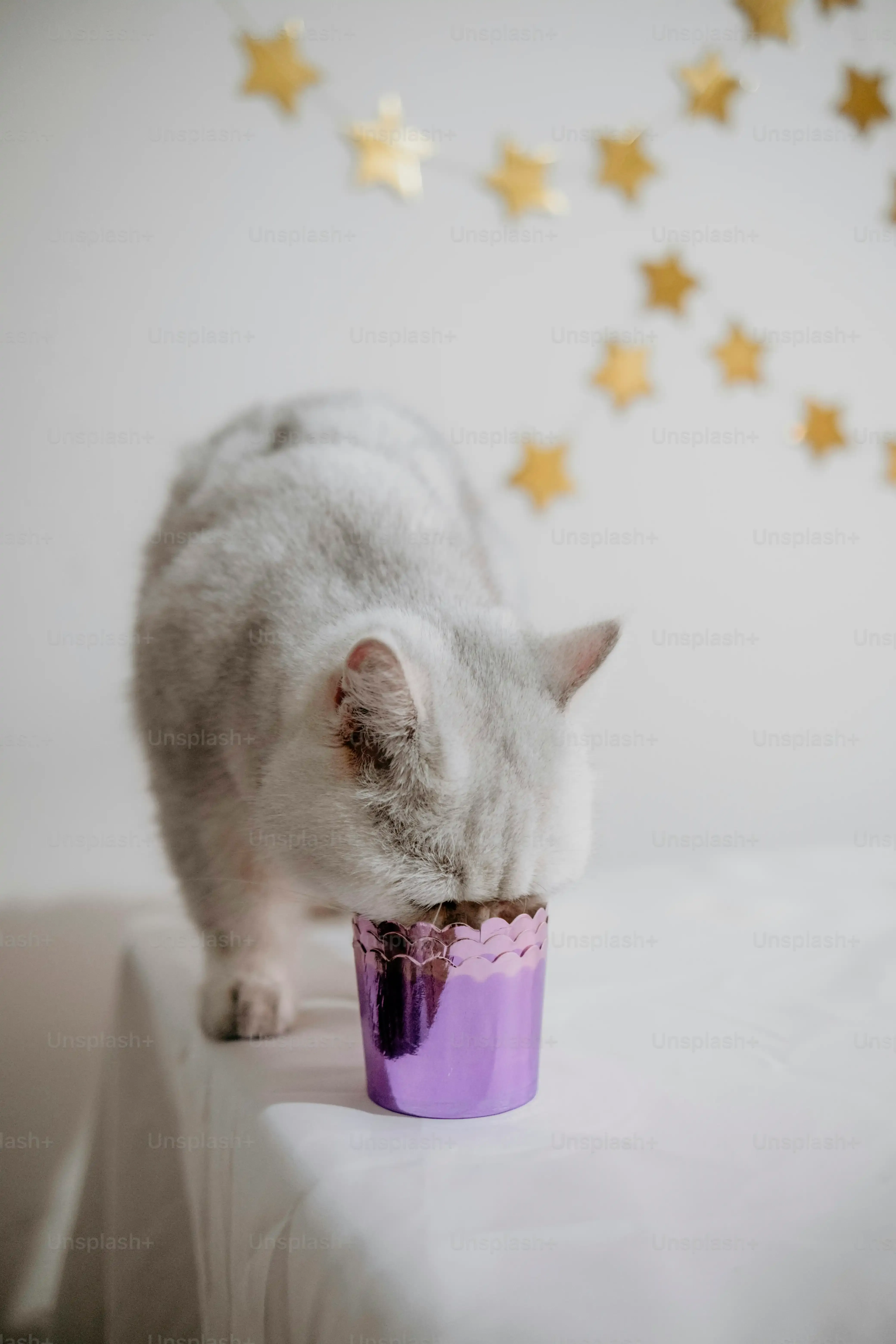
Level Up: More Challenging Homemade Cat Treat Toy Designs
The Bottle Roller Challenge
you've mastered the toilet paper tube. Your cat is probably scoffing at your basic attempts by now. Time to crank it up a notch with a homemade cat treat toy using plastic bottles. Grab an empty, clean plastic water bottle – the smaller ones work well for most cats. Poke several holes around the sides, large enough for a piece of kibble or a small treat to fall out when the bottle is rolled. Don't make them too big, or it's no challenge. Fill it with treats, screw the lid back on tight, and present it. Your cat now has to figure out that batting and rolling the bottle is the key to unlocking the treasure inside. This requires a bit more coordination and persistence than the tube, making it a more rewarding win. Watching them chase the bottle around, focused and determined, is half the fun for you.
DIY Puzzle Box Brain Teasers
Ready for something that really makes them use their noggin? A homemade cat treat toy in the form of a puzzle box is the answer. You can use a small cardboard box (like a shoebox lid or a sturdy gift box). Cut various shapes of holes in the top or sides – some maybe just big enough for a paw, others requiring a bit more manipulation. Place treats inside the box. The cat has to reach in, or tip the box, or figure out the specific angle needed to extract the food. You can add cardboard dividers inside to create compartments, increasing the difficulty. This mimics the natural behavior of cats exploring tight spaces and using their paws to investigate and retrieve hidden items. It’s a step up from just rolling something around and provides sustained mental effort.
- Plastic bottle roller (poke treat-sized holes)
- Cardboard puzzle box (cut various shaped holes)
- Muffin tin with balls/toys covering treats
- PVC pipe sections glued together with end caps (drill holes)
- Empty food containers with lids (cut openings)
Tips for Using Your Homemade Cat Treat Toy Safely
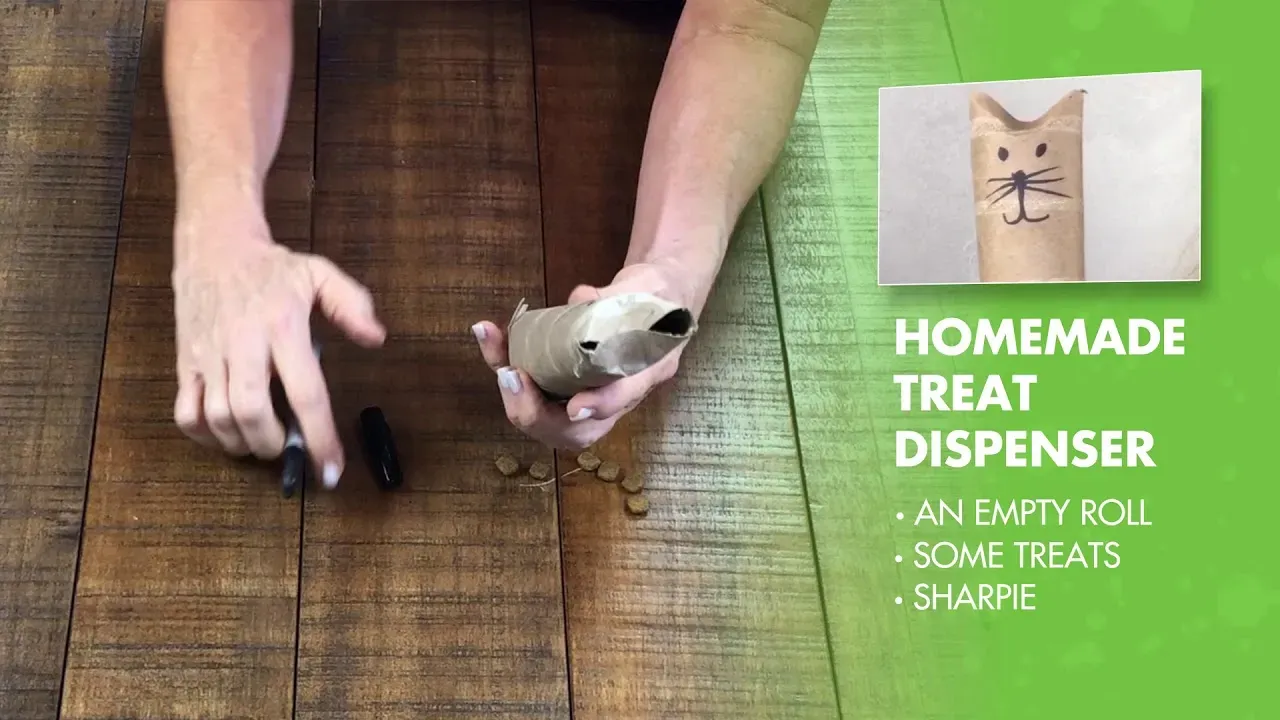
Tips for Using Your Homemade Cat Treat Toy Safely
so you've whipped up a few genius homemade cat treat toy creations. Before you unleash them and watch the fun (and inevitable chaos), a quick safety check is non-negotiable. Seriously, don't skip this part. The goal is enrichment, not an emergency vet visit because Mittens decided that little cardboard flap was a tasty snack, or she got her head stuck in a hole you thought was big enough. Always supervise your cat, especially the first few times they interact with a new homemade cat treat toy. Look for any small parts that could break off and be swallowed – things like tape, glue, or tiny bits of plastic. Cardboard is generally okay if they chew it a bit, but if they're actively eating large chunks, maybe that particular toy isn't the best fit. Check for sharp edges, particularly if you used scissors or a craft knife to cut holes. Smooth everything down. If a toy starts looking ragged or damaged, it's time for the trash, not just putting it back in the toy basket. Rotating toys helps keep things interesting, but it also gives you a chance to inspect them for wear and tear.
- Supervise your cat during play, especially initially.
- Check for small parts that could be chewed off and swallowed.
- Ensure there are no sharp edges on the toy.
- Discard damaged toys immediately.
- Choose materials that are non-toxic if ingested in small amounts (like plain cardboard).
- Make sure openings are large enough to prevent heads or paws from getting stuck.
Beyond the Treat: Getting the Most from Homemade Cat Toys
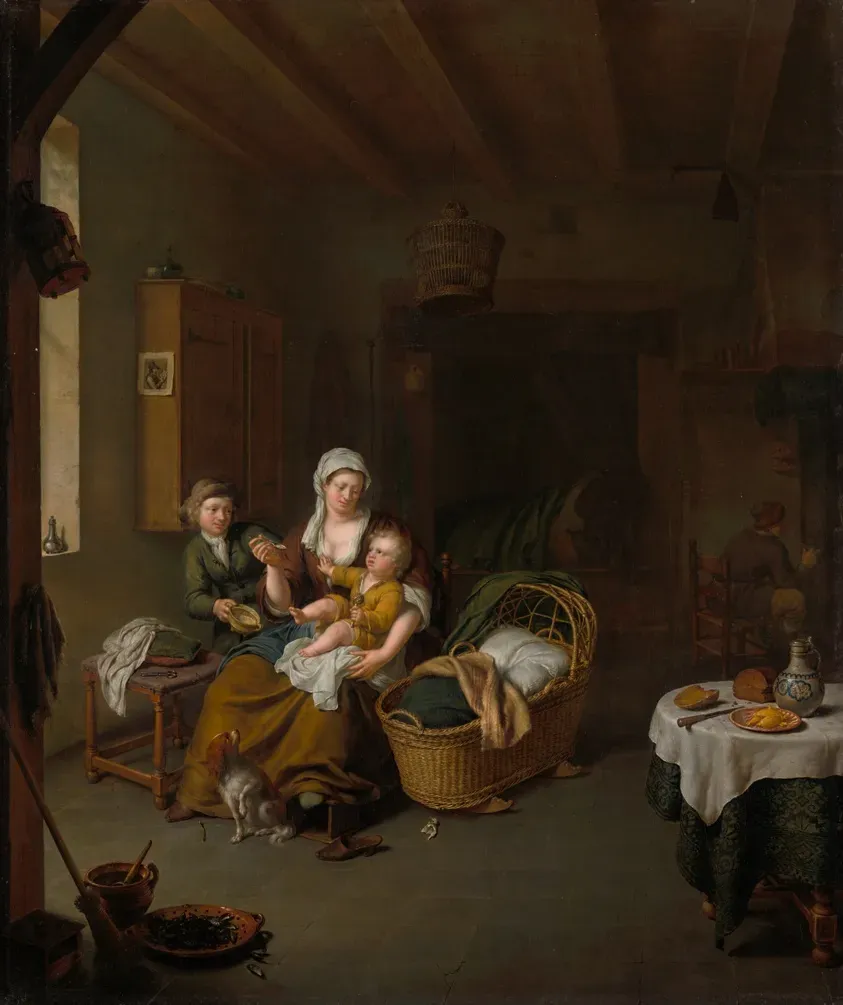
Beyond the Treat: Getting the Most from Homemade Cat Toys
Beyond Just the Kibble: Non-Food Fun
so the initial hook for a homemade cat treat toy is usually, well, the treat. It's the primary motivator. But these simple contraptions can offer more than just a delivery system for kibble. Once your cat understands the mechanics – how to bat the bottle, how to dig into the egg carton – you can start using them for non-food rewards too. Maybe hide a favorite small toy inside, like a felt mouse or a crinkle ball. The thrill of the hunt is still there, even if the prize isn't edible. This keeps the toy interesting even when they aren't hungry and helps reinforce that interacting with the toy itself is a positive activity, not just a means to an end. It broadens the toy's utility beyond just a slow feeder or puzzle, turning it into a general enrichment tool.
Integrating Toys into Playtime and Rotation
Don't just plop the homemade cat treat toy down and walk away (unless you're supervising from a distance). Integrate these toys into your regular playtime routine. Roll the bottle for them, tap the puzzle box to get their attention, make it a shared activity. This interaction strengthens your bond and teaches them how to use the toy effectively. Remember how cats get bored easily? Rotation is key. Don't leave every single homemade creation out all the time. Put a couple out, let them play for a day or two, then swap them for others you have stored away. This keeps the toys feeling novel and exciting. It's like bringing out "new" toys without spending a dime, preventing that glazed-over look of feline indifference.
How often do you rotate your cat's toys?
Making Playtime Matter with Homemade Cat Treat Toys
So there you have it. Turning everyday items into a homemade cat treat toy isn't just a craft project; it's a direct line to boosting your cat's well-being. You're providing mental stimulation, encouraging physical activity, and strengthening that bond you share. It’s about making their environment more interesting and tapping into those innate hunting and problem-solving skills they possess. Start simple, observe what your cat enjoys, and don't be afraid to experiment. Not every design will be a hit, and that's fine. The goal is engagement, not perfection. Keep rotating those toys, keep the treats appealing, and you'll likely see a happier, more fulfilled feline companion patrolling your home.